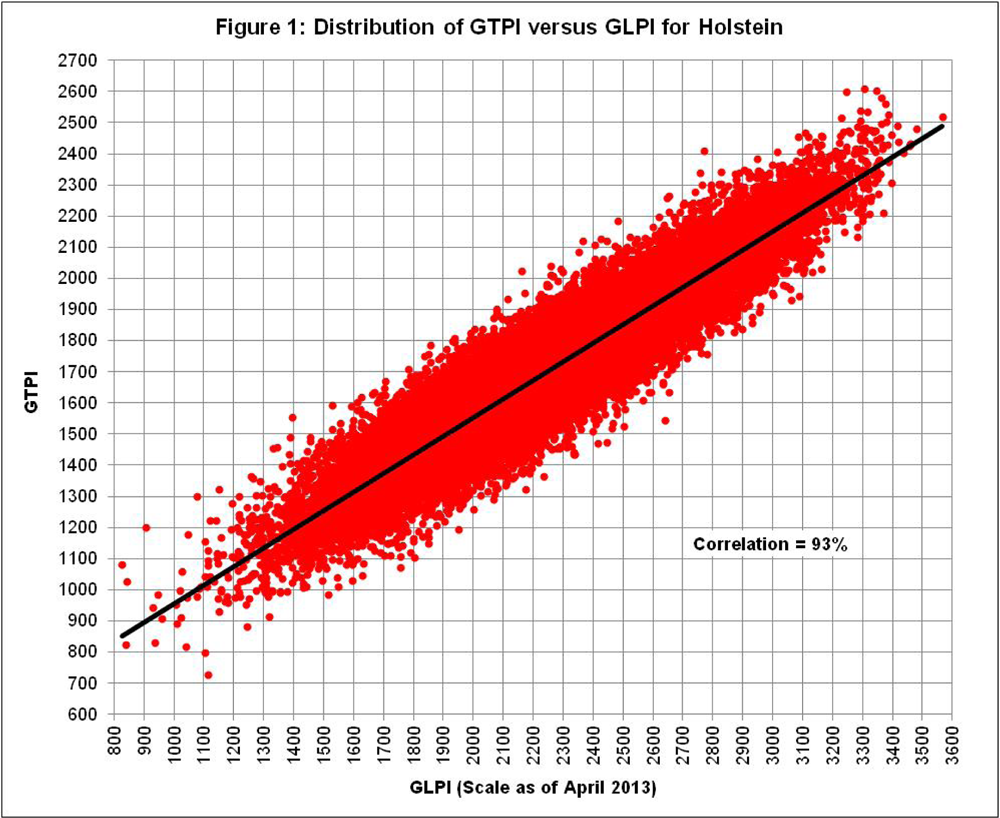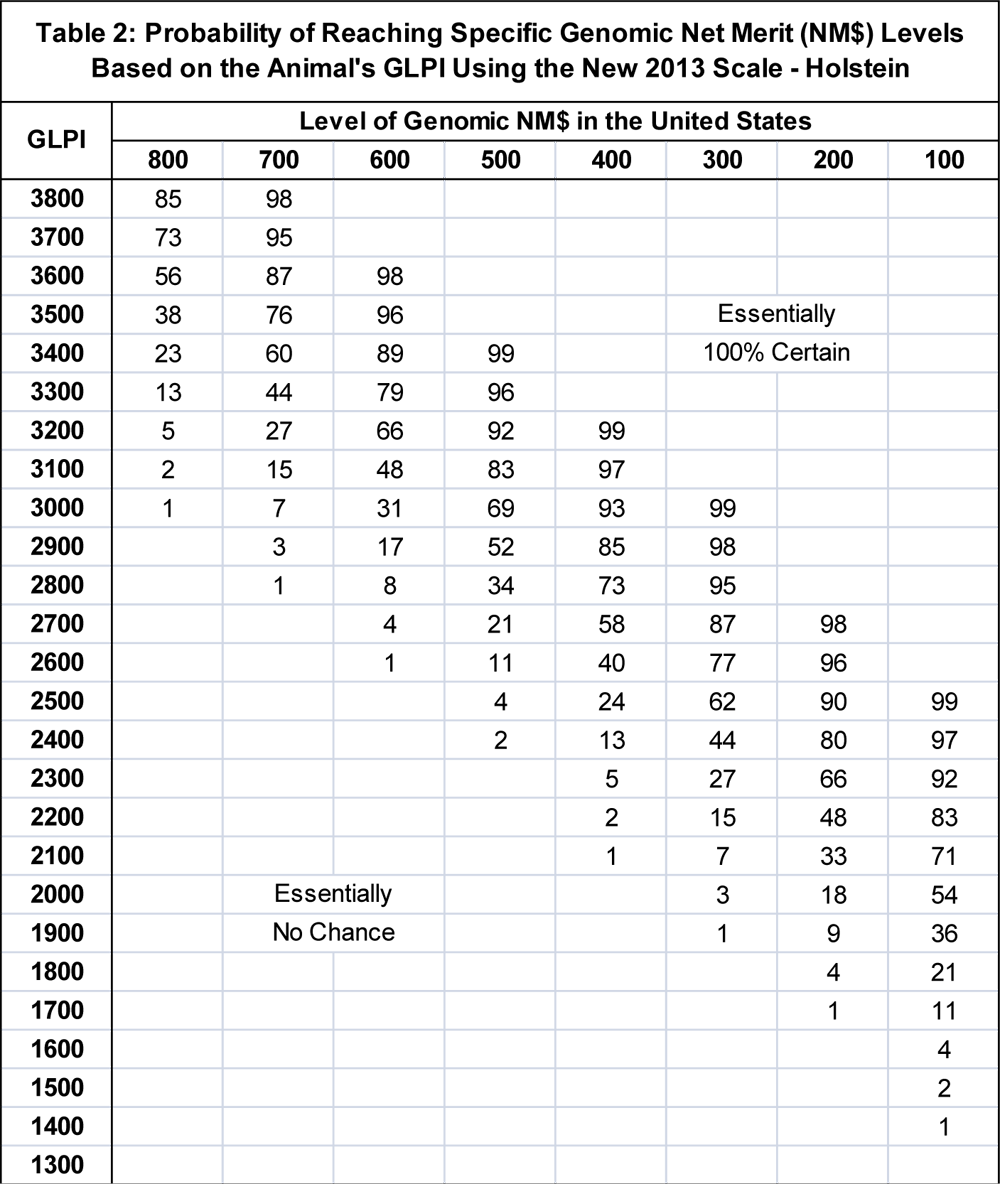The dairy cattle improvement industry in the United States has recently undergone a major change as it relates to genetic and genomic evaluation services. As with most countries, genetic evaluation services in the United States began as a responsibility and activity of the federal government. More specifically, for several decades now, the Animal Improvement Programs Laboratory (AIPL) of the United States Department of Agriculture (USDA) has received and processed data from various sources across the U.S. into a national system, conducted research on a vast array of important topics, established genetic evaluation systems for many traits and computed routine evaluations for bulls and cows in all dairy cattle breeds that were delivered to the industry organizations and producers. During the course of the past few years, the dairy cattle improvement industry in the United States has been restructured commencing with the release of the April 2013 genetic evaluations.
New Governance Model for Genetic Evaluation Services
The final steps of a lengthy process of consultation and planning were realized in late 2012 and the first quarter of 2013. Officially, the Council for Dairy Cattle Breeding (CDCB) is now responsible for delivering genetic and genomic evaluation services for all dairy cattle breeds in the United States. Similar to the governance model of Canadian Dairy Network (CDN), the CDCB is led by a Board of Directors that has representation from the national breed associations, the milk recording and data processing centres as well as the A.I. sector. During an initial transition period that may be up to two years in duration, the researchers and staff at USDA-AIPL will assist in the calculation and delivery of genetic evaluation services. The main focus for USDA-AIPL into the future will be continued research and development in support of the national genetic evaluation services controlled by the industry stakeholders through the CDCB.
Financing U.S. Genetic Evaluation Services
Due to the privatization of genetic evaluation services to the industry, the business plan for the CDCB needed to include a plan for financing such important activities. As a consequence, the Board of Directors of the CDCB approved a fee structure that had two main principles; (a) that fees would be applied to genotyped animals and (b) that the applied fees would consider the degree to which the herd owner or A.I. organization contributes pedigree and performance data to the national genetic evaluation system. Simply stated, herdbook registered animals in the United States that are milk recorded and type classified already contribute valuable data to
current and future genetic evaluation services relative to foreign animals that may be genotyped within the North American system. Although the CDCB fee structure is rather complex and detailed, the most important fact to Canada is that a fee is now payable for every animal (male or female) for which the Canadian owner wishes to have a genomic evaluation in the United States with its associated GTPI and/or Genomic NM$ (Net Merit). For Canadian breeders, regardless of the breed, Holstein Canada intends to act on their behalf and collect the required fees from those interested in receiving a U.S. genomic evaluation and provide the associated payment to the CDCB. The process for achieving this goal is currently under development at Holstein Canada with completion expected in the near future.
Screening Based on GLPI
In Canada, official genomic evaluations including the GLPI are released by CDN on a monthly basis for all newly genotyped females and Holstein Canada generates a printable genomic evaluation report that is made available electronically to the animal’s owner. For males, the same process is used but the resulting genomic evaluations delivered to the bull owner are unofficial and therefore not presented on the CDN or breed association web sites. Whether it is a genotyped male or female, breeders in Canada will then need to decide if they want to pay for receiving a U.S. genomic evaluation, which would normally arrive the following monthly release. To assist in this decision-making process, CDN and Holstein Canada collaborated in a study to relate GLPI values for Holsteins in Canada to their GTPI value in the United States. The results of this analysis can serve as a means for screening which animals are worthwhile paying to receive a U.S. genomic evaluation including GTPI and Genomic NM$.
Figure 1 is a plot of the GTPI and GLPI values in April 2013 for Canadian Holsteins, which includes nearly 31,000 animals. The correlation of genomic evaluations on each side of the border is 93% so knowing the GLPI of an animal in Canada provides an excellent indicator of the level of its GTPI in the United States. For example, if an animal has a GLPI of 2800, then following that line up in the graph will show that it crosses the solid dark line very close to 2000 on the GTPI scale, which means they are essentially equivalent on average. The actual data points show, however, that among all animals with 2800 GLPI, the range in their GTPI is slightly broader. In terms of confidence intervals, 90% of the animals will have a GTPI that is within ±150 GTPI points from the predicted level indicated by the dark solid line regardless of their GLPI in Canada. For the example above, this means that 90% of all animals that have a GLPI of 2800 will have a GTPI value between 2150 and 1850 (i.e.: 2000±150).
Another way of analyzing the same data is presented in Table 1, which shows the probability that an animal’s GTPI surpasses specific levels depending on its GLPI value. For example, a heifer or young bull with a GLPI that rounds to 3200, has a 1% chance of reaching a GTPI of 2500 or higher and an 8% chance of surpassing 2400 GTPI. As one considers lower GTPI levels, the probability of reaching it increases to a point where there is a 97% chance that an animal with 3200 GLPI reaches at least 2100 for GTPI and it is essentially certain that they will surpass the 2000 GTPI mark.
In United States, there are two main official national indexes for ranking animals, which include the TPI calculated by the USA Holstein Association and Net Merit (NM$) for all breeds, as calculated by USDA-AIPL. Similar to the analysis above done for GTPI, the association between GLPI and Genomic NM$ can also be examined. Figure 1 shows the plot of these values in April 2013 for genotyped Canadian Holsteins, which shows a high correlation of 85%.
Given the different scale used for Net Merit compared to TPI in Holsteins, Table 2 presents the resulting probabilities associated with reaching specific levels of Genomic NM$ in the United States based on the animal`s GLPI in Canada.
Summary
The calculation and delivery of genetic evaluation services in the United States has gone through a significant change with the Council for Dairy Cattle Breeding (CDCB) taking over the responsibility commencing the April 2013 release. This transition away from federal government services also required the establishment of a fee structure, which has been directly linked to the provision of genomic evaluations for dairy cattle males and females, both domestic and foreign. Given the strong association between GLPI and GTPI values, Canadian breeders can screen animals based on their GLPI in order to identify those for which they wish to pay the fees to receive a genomic evaluation in the United States, including GTPI and Genomic NM$.















